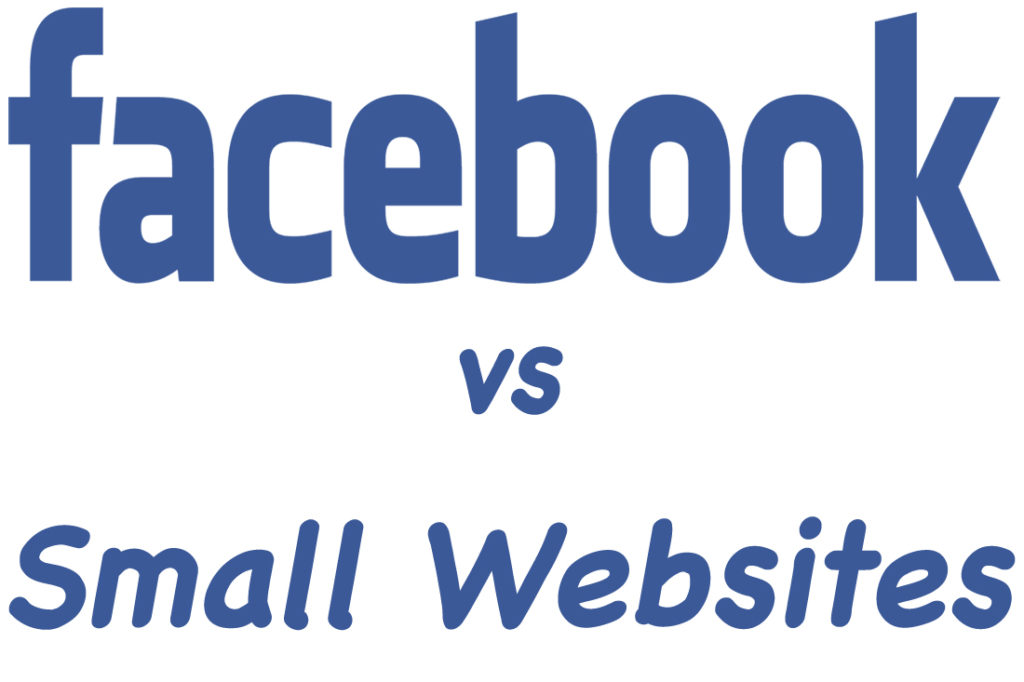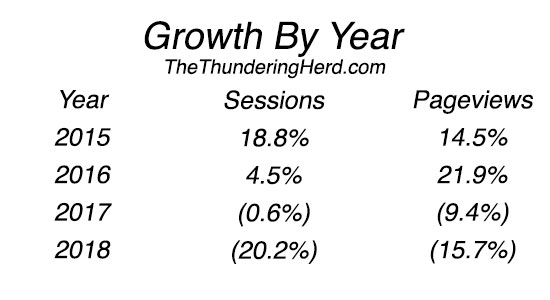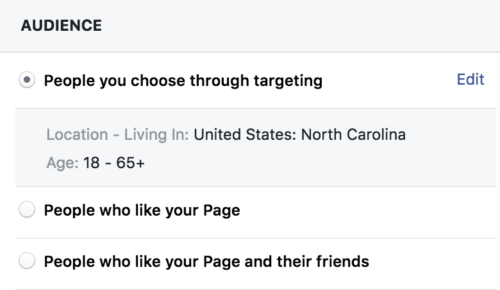Share This Post
From time to time, I share something I have learned about operating websites so that others can profit from the knowledge.
Facebook. Love them or hate them, they are the largest social media platform in the world with over 2.2 billion active users monthly. Yes, bigger than YouTube, Instagram or Twitter. And, yes, bigger than Chinese based Weibo.
Plus they add over 20 million new users a month.
By sheer numbers alone, website owners need a presence on Facebook. In fact, for websites overall, Facebook rivals Google – yes, Google the search engine – for organic traffic referrals (i.e., non-paid traffic going to a website). At one point, Facebook surpassed Google as the largest organic referrer, though Google retook the lead in 2017.
The reason Google retook the lead is the same issue website owners are facing – Facebook changed their algorithms in 2017 (and again in 2018) de-emphasizing Facebook Pages. Small website owners who do not rely on paid advertising paid dearly for this change.
To emphasize how dramatic this is, I thought I would share statistics from one of my websites, The Thundering Herd. The website has existed over a decade, has thousands of posts, and receives thousands of visits every week. It also does not spend a penny in advertising, making it a great case study for the impact of organic (non-paid) referrals.
Note – For today’s analysis, I utilized Google Analytics data for the period of January 1 through May 19 from 2014 to present. This data corresponds to the annual data but removes any seasonality effect of the current year. In other words, close enough for demonstrating broad trends.
For years, the website grew traffic rapidly as measured by pageviews and sessions. A session is a single visit by a single person, regardless of how many pages they view. A pageview is, as the name implies, a single view of a page. A person who visits the website and looks at three pages qualifies for 1 session and 3 pageviews.
That shows a dramatic reversal of fortunes in the last 18 months. The website is now running at 2014 visitor levels (sessions are 1.5% below 2014, though pageviews are up by 6.6%).
Since The Thundering Herd is not a business, we aren’t talking fortunes being lost. While I do run advertising on the website, my goal is to cover the operating costs of the servers (I utilize Virtual Private Servers since the website outgrew shared hosting long ago), though not the cost of additional software and tools. Unfortunately, even that is not happening as advertising revenue is down 25.3% so far in 2018.
Some time for hard soul searching. Is the website losing its edge? Are people losing interest? Many of the original dog bloggers of ten years ago shuttered their sites and turned their interests elsewhere.
Digging a little deeper, however, points to a major culprit in the decline – Facebook.
To put things in perspective, if you don’t advertise (and The Thundering Herd does not), you get your visitors from a handful of places: Social media, Organic (i.e., searches on Google, Yahoo and other search engines), newsletters (a terrific tool), referrals (i.e., links from other websites), and direct (people typing in TheThunderingHerd.com).
For The Herd, social media is king. More than half of our traffic comes via social media. Since 90% of our social media traffic comes from Facebook, around half of our traffic comes from Facebook itself.
That’s the problem in a nutshell. Facebook sessions in 2018 are down more than 30% from 2017. If half of your volume is falling that rapidly, the total picture looks bleak.
What happened?
Two things are driving the change in Facebook:
Money – Pretty simple, but Facebook long allowed businesses to set up pages for free and share their posts with their followers for free. Those days are gone. Facebook wants page owners to pay for the right to share posts with their followers.
Politics – You may have noticed that Facebook has been in the news a little bit. That free-wheeling option to create pages allowed fake organizations to create pages and spread misinformation.
As a result, Facebook has forced the algorithm that determines what appears in your newsfeed to deemphasize pages. When I post something on the Facebook page, only 10% and 15% of the followers to the page have my post appear in their feed. Just two years ago, more than half of the followers were seeing each day’s post. That dramatic drop is causing the collapse in viewers from Facebook.
In case you didn’t know, Facebook advertising includes a category called “People who like your page.” Facebook makes it quite clear to pages they expect us to pay to reach the viewers who have already indicated that they want to see the information.
As crazy as that sounds, for a business that isn’t a bad deal. Essentially, Facebook helps identify people who like your product and wants you to pay to advertise to those people.
Facebook also allows that business to advertise to friends of the people who like their products. Friends tend to have the same interests, so this is a great targeting effort for businesses.
But The Thundering Herd doesn’t sell anything. We earn a pittance from running advertisements, but less than our costs. Increasing our costs with advertising through Facebook doesn’t make sense.
(As a user, if you want to see more posts from a page you already like, you should interact heavily with the page. For example, liking and commenting on posts increases the likelihood that the next post will appear in your feed.)
Now what?
I don’t expect Facebook to reverse course. In fact, I would expect the trend to worsen. I can see a day where Facebook doesn’t even show the page posts to the 10-15% who get it today. They may expect businesses to pay for every single view. Considering that Facebook represents 46.5% of my visitors (down from 53.1% a year ago), that represents a huge threat.
But advertising, the option that Facebook wants me to pursue, is not in the cards. To afford that, I would have to significantly increase the advertising revenue on the site, something I don’t want to do. I believe too much advertising distracts from the site.
So what am I doing? My focus will be on three main areas:
Newsletter – Hands down, this is the best tool. Newsletter subscribers are very loyal with high clickthrough rates. Since not everyone is interested in frequent newsletters, I am creating flexibility where the user can decide how often they want to hear from me. This is being done by upgrading the newsletter distribution to a new third party (same on the dkwall.com website, too). Though there is a cost to doing this, it is less than the cost of advertising on Facebook.
SEO – With Google surpassing Facebook in driving traffic to websites, I am refocusing on SEO (search engine optimization). I have seen a healthy 5.8% growth in traffic from search engines, though this still represents only 10.6% of all of my visitors. If Google represents more traffic to websites overall than Facebook, I am missing out on an opportunity here.
Other social media – Though nothing else comes close to Facebook in terms of volume, I have seen some decent results from other sites, Tumblr and Pinterest in particular. All non-Facebook Social Media still represents only 4.4% of my traffic. Lots of room for growth, but the growth would have to be dramatic to make a dent in the Facebook challenge. For that reason, this is a distant third priority.
If you run a website – particularly a smaller website, I hope that this information is of help. Are you seeing similar results? What are you doing – outside of paid advertising – to enhance traffic?
(Don’t worry – back to my short stories and photography soon. And, of course, the next Pestilence chapter comes out Thursday.)



